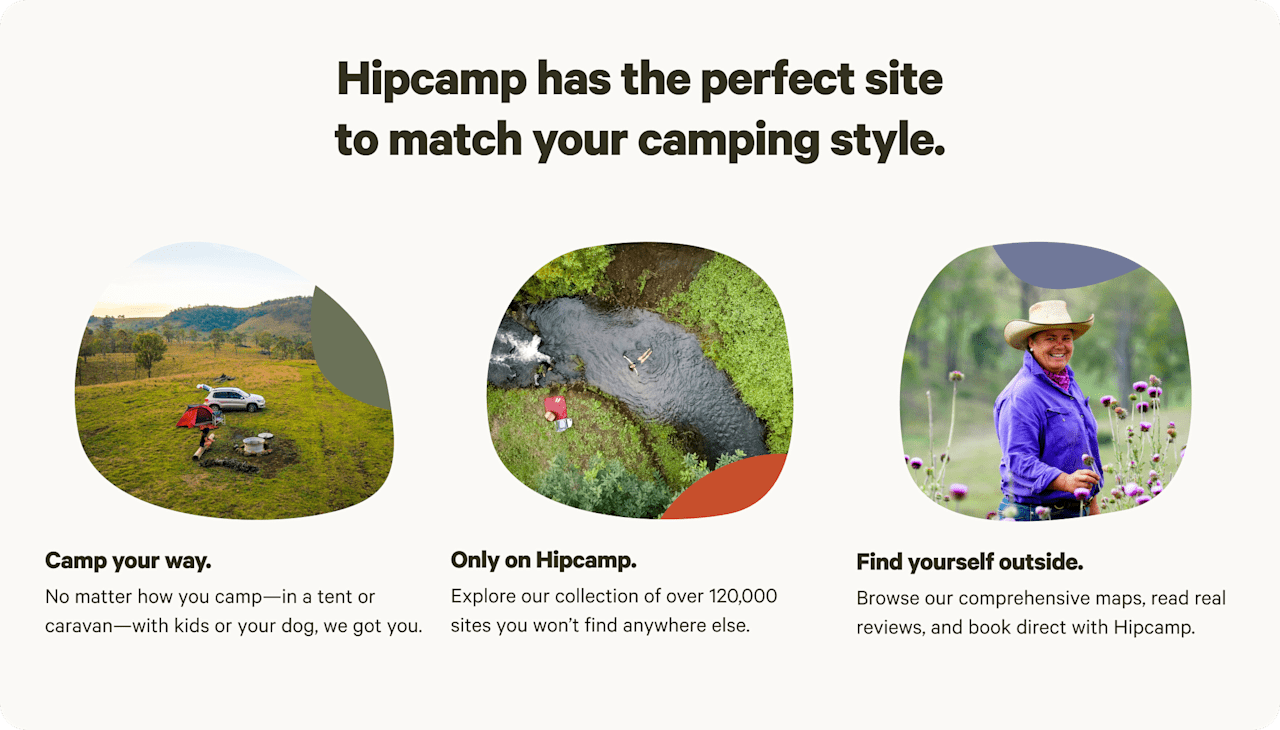- Yulara
Popular camping styles for Yulara


Camping near Yulara guide
Overview
The Northern Territory town of Yulara is about 20 kilometres from the entrance to the Uluru-Kata Tjuta National Park, so it’s where many campers stay when visiting the Red Centre. Camping isn’t allowed within the national park or along roadsides, but Yulara options may offer powered and unpowered sites as well as cabins, plus amenities like swimming pools and playgrounds. Campers on a limited budget might want to stay in Curtin Springs (85 kilometres away, but that’s nearby in this part of Australia!), which has a very small number of powered and unlimited unpowered sites.
Where to go
Uluru-Kata Tjuta National Park
The main reason most people have for camping in Yulara is to visit this spectacular national park, home to both the monolith of Uluru and the domed rock formations of Kata Tjuta/ Mt. Olga. Many visitors like to come to these sites at different times of day, especially sunrise and sunset. While you can’t camp within the park itself, you can enjoy a range of other experiences, from camel riding to eating bush tucker around a campfire under the stars.
Curtin Springs
With its unlimited unpowered campsites (and four bookable powered campsites), Curtin Springs is another popular place to camp near the Uluru-Kata Tjuta National Park. While it’s further away than Yulara, it’s situated on the Lasseter Highway, east of Yulara, making it an ideal place to stop on road trips to or from Alice Springs. Curtin Springs is also a good base for walks or four-wheel drive tours to the Curtin Springs Station.
Watarrka National Park
Northeast of Yulara and the Uluru-Kata Tjuta National Park, Watarrka National Park is another major attraction in the Red Centre and home to the western end of the George Hill Range. The main attraction in the park is the dramatic Kings Canyon, the walls of which soar 100 metres above the valley floor. Camping isn’t allowed within the national park but tent camping, shared bunkhouses, safari-style cabins, and other accommodations are available nearby.
When to go
This part of the Northern Territory can experience extremely hot temperatures between October and April, while days are milder and nights cold between May and September. If visiting Yulara in the hotter months, you might want to restrict your outdoor activities to the early mornings and evenings, and to avoid daytime hiking. If camping in the colder months, be prepared with warm sleeping bags and overnight clothing as desert nights can be surprisingly cold.













